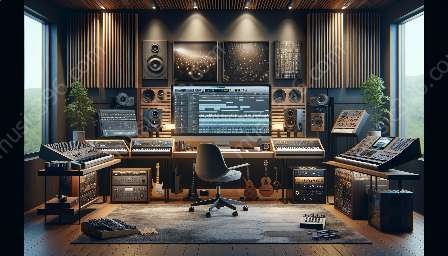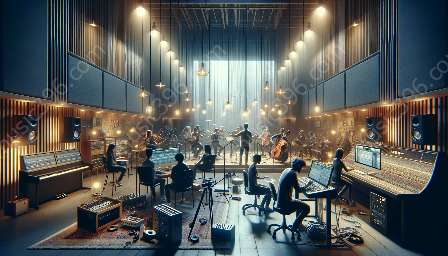Unconventional musical forms have always challenged traditional boundaries and paved the way for new sonic experiences. By breaking away from conventional structures, these forms have the power to captivate, surprise, and provoke emotions in the listener. In this article, we'll delve into a variety of unconventional musical forms, exploring their impact on the listener and their significance within music composition.
Aleatoric Music
Aleatoric music, also known as chance music, embraces indeterminacy and randomness in its composition. The use of elements such as coin tosses, dice rolls, or other unpredictable methods allows for a unique and often unpredictable musical outcome. Listeners of aleatoric music are taken on a journey of uncertainty, where the unexpected nature of the composition invites them to engage with the music on a deeper level. Each performance becomes a one-of-a-kind experience, evoking a sense of intrigue and curiosity in the listener, as they anticipate the unfolding of the musical elements.
Musique Concrète
Musique concrète is a form of electroacoustic music that utilizes recorded sounds, often those found in the environment, as the basis for composition. By manipulating and recontextualizing these sounds, composers create textures and atmospheres that invite listeners to explore the sonic landscape in unconventional ways. The impact of musique concrète on the listener is profound, as it challenges preconceived notions of what constitutes music. Listeners are transported into immersive sonic realms, where everyday sounds take on new meanings and evoke emotions that transcend traditional musical structures.
Experimental Noise
Experimental noise, as the name suggests, pushes the boundaries of traditional musical norms by embracing dissonance, distortion, and unconventional sound sources. This form of music challenges the listener to confront their preconceived ideas about harmony and melody, often evoking a range of emotional responses from discomfort to fascination. The impact of experimental noise on the listener is visceral, as the unconventional sonic elements disrupt expectations and prompt introspection and contemplation.
Minimalism
Minimalism in music emphasizes repetition, simplicity, and gradual transformation, often with a focus on subtle nuances over time. This unconventional form has a profound impact on the listener, as the repetitive patterns and gradual shifts create a meditative, immersive experience. Listeners are drawn into a state of deep concentration, where the subtleties of the music demand attention and introspection, leading to a heightened sense of awareness and contemplation.
Microtonal Music
Microtonal music expands on the traditional Western 12-tone scale, incorporating intervals smaller than a semitone. This unconventional approach to pitch and tuning introduces listeners to new sonic territories, challenging their ear to perceive and appreciate intervals outside of the familiar. The impact of microtonal music on the listener is transformative, as it expands their sonic palette and invites them to explore the rich tapestry of microtonal intervals, creating a deep sense of musical discovery and exploration.
These examples of unconventional musical forms demonstrate the diverse ways in which composers and artists continue to push the boundaries of music composition, challenging listeners to engage with music in new and unexpected ways. Through embracing indeterminacy, recontextualizing sounds, exploring dissonance, emphasizing repetition, and expanding sonic palettes, these forms have a profound impact on the listener, shaping the way they experience and interact with music.




























